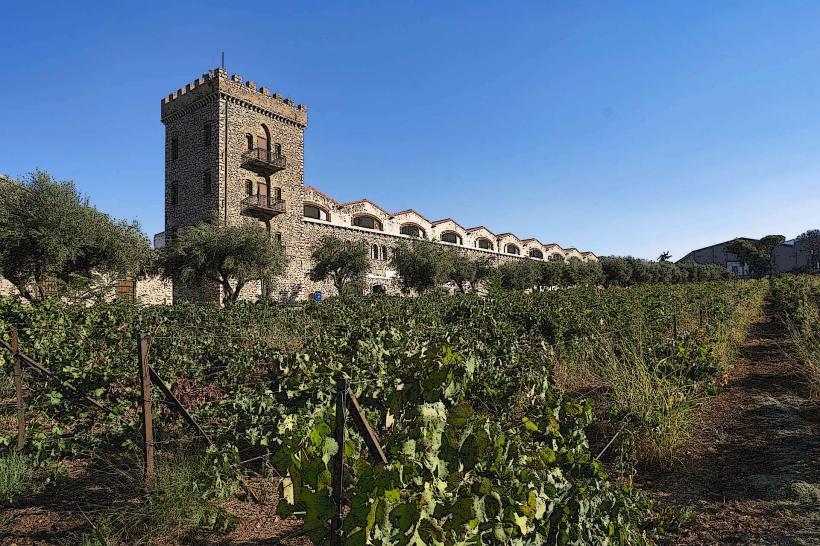Information
Landmark: Patras CastleCity: Patras
Country: Greece
Continent: Europe
The Patras Castle (also known as the Castle of Patras) is a significant historical and architectural landmark in the city of Patras, located in the Achaea region of western Greece. Situated on a hill overlooking the city's harbor, the castle offers spectacular views of the Gulf of Patras and has played an important role in the city’s defense and history throughout the centuries.
Overview of Patras Castle:
Location: The castle is strategically positioned on the Panachaikos Hill, the highest point of the city, offering commanding views of Patras and the surrounding coastline. The location of the castle provided a natural vantage point for defense purposes against invaders.
History: The history of Patras Castle dates back to ancient times, although the present structure we see today was built during the Byzantine era and later modified by successive rulers.
Construction and Architectural Evolution:
Ancient Origins:
- The origins of the castle trace back to ancient Greek and Roman times. During the Roman period, a fortress or stronghold likely existed at the site. The Roman Emperor Hadrian is known to have constructed various fortifications across the empire, and Patras may have been among the cities with early defensive structures.
Byzantine Era:
- The current structure of Patras Castle was primarily built during the Byzantine period, around the 6th century AD. The Byzantines used the fortifications to defend the city against the growing threat of invasions by Barbarians and later Slavs.
- The castle was designed with thick walls, watchtowers, and gates to offer protection to the inhabitants.
Frankish and Venetian Rule:
- In the 13th century, after the fall of Constantinople, Patras came under the control of the Franks and was later passed to the Venetians. During this time, the castle underwent significant expansions and fortifications.
- The Venetians improved the structure, reinforcing the outer walls and adding new bastions, watchtowers, and gates.
Ottoman Period:
- Following the Ottoman conquest of the city in the 16th century, Patras Castle remained under Ottoman control for several centuries. The Ottomans made several modifications to the structure, including the addition of a mosque inside the castle.
- However, the Ottomans did not make major structural changes, and the castle retained its medieval character during this period.
Greek War of Independence:
- One of the most significant moments in the history of Patras Castle came during the Greek War of Independence (1821–1829). In 1828, after a long siege, the castle was liberated from Ottoman rule by Greek forces, marking a pivotal event in the struggle for Greece's independence.
Architectural Features:
Fortifications:
- The castle is surrounded by thick stone walls that are fortified with several towers and bastions. These walls served to protect the city from external threats and played a critical role in the defense of Patras throughout the centuries.
Main Gate and Entrance:
- The main gate of the castle is a large, arched entrance, typical of the medieval military architecture, providing access to the interior. The entrance is heavily fortified with wooden doors and metal reinforcements.
Towers:
- The castle features several towers that rise above the walls, allowing defenders to observe the surrounding area and defend against attacks. Some towers are square-shaped, while others are cylindrical, each serving different purposes during various periods of the castle's history.
Interior:
- Inside the castle, there are remains of various buildings, courtyards, and arches. Parts of the castle are in ruins, but visitors can still explore the complex layout, which includes remnants of Byzantine, Venetian, and Ottoman architecture.
- The Ottoman mosque, which was built inside the castle, is a notable feature of the interior.
Views:
- The location of the castle on Panachaikos Hill provides panoramic views of Patras, the Gulf of Patras, and the surrounding mountains. It is one of the best spots in the city for a comprehensive view of the region.
Current Use and Visitor Experience:
Tourism:
- Today, the Patras Castle is a popular tourist destination, offering visitors a glimpse into the city's long history, from the Byzantine era to the Ottoman period and beyond. The castle is a key landmark of Patras and attracts history enthusiasts and visitors interested in exploring Greece's medieval and modern heritage.
- The castle’s location on a hill provides breathtaking views of the city and the Gulf of Patras, making it a perfect spot for photography.
Events and Cultural Activities:
- The castle is often used as a venue for various cultural events, including festivals, performances, and exhibitions. It plays a role in the modern cultural life of Patras, hosting events during the Patras Carnival and other significant festivals.
Restoration Efforts:
- Over the years, there have been ongoing efforts to preserve and restore the castle’s structure. Some parts of the castle have been restored to maintain their historical integrity, while others remain in a more ruinous state.
Conclusion:
The Patras Castle is a monument to the city’s rich and complex history. Its strategic location and long-standing presence as a fortified site reflect its importance in the defense and cultural evolution of Patras. Whether you're interested in Byzantine architecture, Venetian fortifications, or the historical significance of the Greek War of Independence, Patras Castle offers a fascinating glimpse into the past, along with stunning views of the city and surrounding landscapes. It remains a must-visit destination for anyone exploring Patras.





